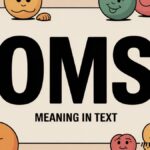15 Alternatives to Starting a Sentence with “And” to Boost Your Writing refers to a variety of sentence starters that can replace the common conjunction “and.” While “and” is often used to connect ideas, relying on it too much can make your writing repetitive and monotonous. By exploring these alternatives, you can elevate your writing style, create better flow, and make your content more engaging.
Imagine transforming your sentences from basic and repetitive to dynamic and professional with just a few simple changes. The 15 alternatives to starting a sentence with “And” to boost your writing will help you break free from predictable structures and open up new ways to express your ideas more clearly and effectively.
From connectors like “moreover” to “furthermore,” the 15 alternatives to starting a sentence with “And” to boost your writing will enhance both the flow and strength of your arguments. Whether you’re writing an email, blog post, or academic paper, using these alternatives will keep your readers interested and make your writing sound more polished.
Why Avoid Starting Sentences with “And”?
Starting a sentence with “and” isn’t inherently wrong, but it’s often overused. While transition words like “and” help link ideas, relying too heavily on them can limit the variety and complexity of your writing. By using alternative sentence starters, you can:
- Improve sentence flow and cohesion.
- Add variety to your writing.
- Ensure smooth transitions between ideas.
- Keep the reader engaged and interested.
If you’re unsure about how to replace “and,” don’t worry! Here are 15 alternatives to help you get started.
1. Moreover
Moreover is a fantastic alternative when you want to introduce an additional point that adds weight or importance to your argument. It’s a connector word that signals an even stronger or more compelling idea is coming.
- Example:
The research findings were groundbreaking. Moreover, they could revolutionize our understanding of climate change.
When to Use:
- When you want to emphasize or strengthen a previously made point.
- When you’re building a logical progression in an argument.
2. Additionally
Much like moreover, additionally is a connector word that indicates you’re adding extra information. It’s especially useful for writing proficiency in academic writing or business communication, where clarity and precision are key.
- Example:
The website’s new design improves user experience. Additionally, it’s more mobile-friendly, which increases accessibility.
When to Use:
- To provide supplementary details or facts.
- When introducing an extra, relevant point.
3. Furthermore
Furthermore serves a similar purpose to moreover and additionally, but it carries a slightly more formal tone. It’s particularly useful when you need to highlight a point that is of equal or greater importance to your argument.
- Example:
The city has invested in new public infrastructure. Furthermore, it plans to extend its green spaces to improve air quality.
When to Use:
- To introduce a significant addition to your argument.
- In formal writing when trying to show that your point is reinforced by another important detail.
4. In Addition
In addition is another excellent alternative that simply adds more information, but in a softer way. It can serve as an introductory alternative to “and” in both casual writing and formal writing.
- Example:
The hotel provides excellent customer service. In addition, it offers complimentary breakfast for guests.
When to Use:
- To smoothly add more details without overpowering the original point.
- In both creative and business writing.
5. Also
“Also” is one of the most common sentence alternatives to “and” and works well in both casual and formal writing. It’s a simple word that maintains the flow of your writing while introducing new information.
- Example:
She’s an accomplished violinist. Also, she teaches music at a local school.
When to Use:
- To add new information that’s related but not as critical as the main argument.
- Works well for creative writing or informal contexts.
6. Find More Words!
There are countless alternatives to starting sentences with “and” that go beyond the common options like “also” or “additionally.” Using diverse word choices can elevate your writing.
Some great options include:
- In fact
- As a result
- As well as
- In the same way
- On top of that
These alternatives can add more variety and depth to your writing. Don’t be afraid to experiment with different phrases to find the one that fits best.
- Example:
She mastered French at an early age. In fact, she spent a year studying abroad in Paris.
7. On Top of That
This is an informal yet powerful way to introduce an additional point, especially when the point is surprising or adds weight to the conversation.
- Example:
The new app is incredibly user-friendly. On top of that, it’s completely free to use.
When to Use:
- When you want to add something unexpected or remarkable.
- Works well for conversational and persuasive writing.
8. Besides
Besides is a great alternative for when you’re introducing an additional point that complements your previous one, often in a way that may slightly change the direction or add a contrasting element.
- Example:
We don’t need to focus on the negatives. Besides, the project is progressing ahead of schedule.
When to Use:
- To introduce something that complements or contrasts the initial point.
- Works best in informal contexts or opinion-based writing.
9. As Well
Used similarly to “also,” as well works well for presenting complementary information. It’s a slightly more formal alternative, perfect for academic writing.
- Example:
The new software is intuitive. The design is sleek as well.
When to Use:
- When you want to add additional information to a point without disrupting the flow.
- Suitable for business emails or academic papers.
10. Likewise
Likewise is a more formal alternative used to introduce a similar idea or action. It’s perfect for showing how two things are in alignment.
- Example:
The board has approved the proposal. Likewise, the stakeholders have voiced their support.
When to Use:
- When making comparisons or drawing parallels.
- In academic writing or formal discussions.
11. Not to Mention
This phrase helps emphasize an important point that may have been understated or overlooked. It draws attention to a significant detail in a more conversational tone.
- Example:
The hotel was beautiful. Not to mention, it was located near all major attractions.
When to Use:
- When you want to underscore something significant.
- Ideal for informal writing or persuasive articles.
12. In the Same Vein
This phrase connects related ideas in a way that emphasizes similarity. It’s great for discussing topics that are closely tied together.
- Example:
The author’s first book was a success. In the same vein, the sequel was met with critical acclaim.
When to Use:
- To show that one point or idea corresponds to another.
- Best for comparative or descriptive writing.
13. Together With
Together with is a connector phrase that’s often used to combine two related ideas into a single, more cohesive point.
- Example:
The marketing team presented their new campaign, together with a proposal for social media strategies.
When to Use:
- To present combined elements that work in unison.
- Suitable for business proposals or professional presentations.
14. What’s More
“What’s more” adds extra emphasis, often introducing something even more important or striking than the previous points.
- Example:
The company saw a huge increase in revenue. What’s more, customer satisfaction has never been higher.
When to Use:
- When you want to highlight an especially impactful or impressive point.
- Great for persuasive writing or marketing content.
15. To Say Nothing of
This phrase is used to add emphasis to something that was previously left out or underemphasized. It’s excellent for highlighting what’s significant in a subtle way.
- Example:
The renovation was extensive. To say nothing of the upgrades to the building’s energy efficiency.
When to Use:
- When you want to underscore something overlooked or previously understated.
- Ideal for descriptive writing or technical explanations.
Conclusion
Using the 15 alternatives to starting a sentence with “And” to boost your writing can make your sentences more varied and interesting. These alternatives help create smoother transitions and add variety to your writing. By changing up your sentence structure, you can keep your reader’s attention and improve the overall flow of your work.
Incorporating the 15 alternatives to starting a sentence with “And” to boost your writing is a simple way to make your writing more professional and clear. These alternatives help avoid repetition and give you better control over how you express your ideas. By using these alternatives, you can make your writing sound more engaging and improve its impact on your audience. Embrace these changes and see how the 15 alternatives to starting a sentence with “And” to boost your writing can take your work to the next level.

Sophie Bell is a creative writer at Mystic Saviour, specializing in Word Mechanics, Name Narratives, and Linguistic Twists. She brings a passion for language and storytelling, helping readers explore unique and engaging ways to enhance their writing.










